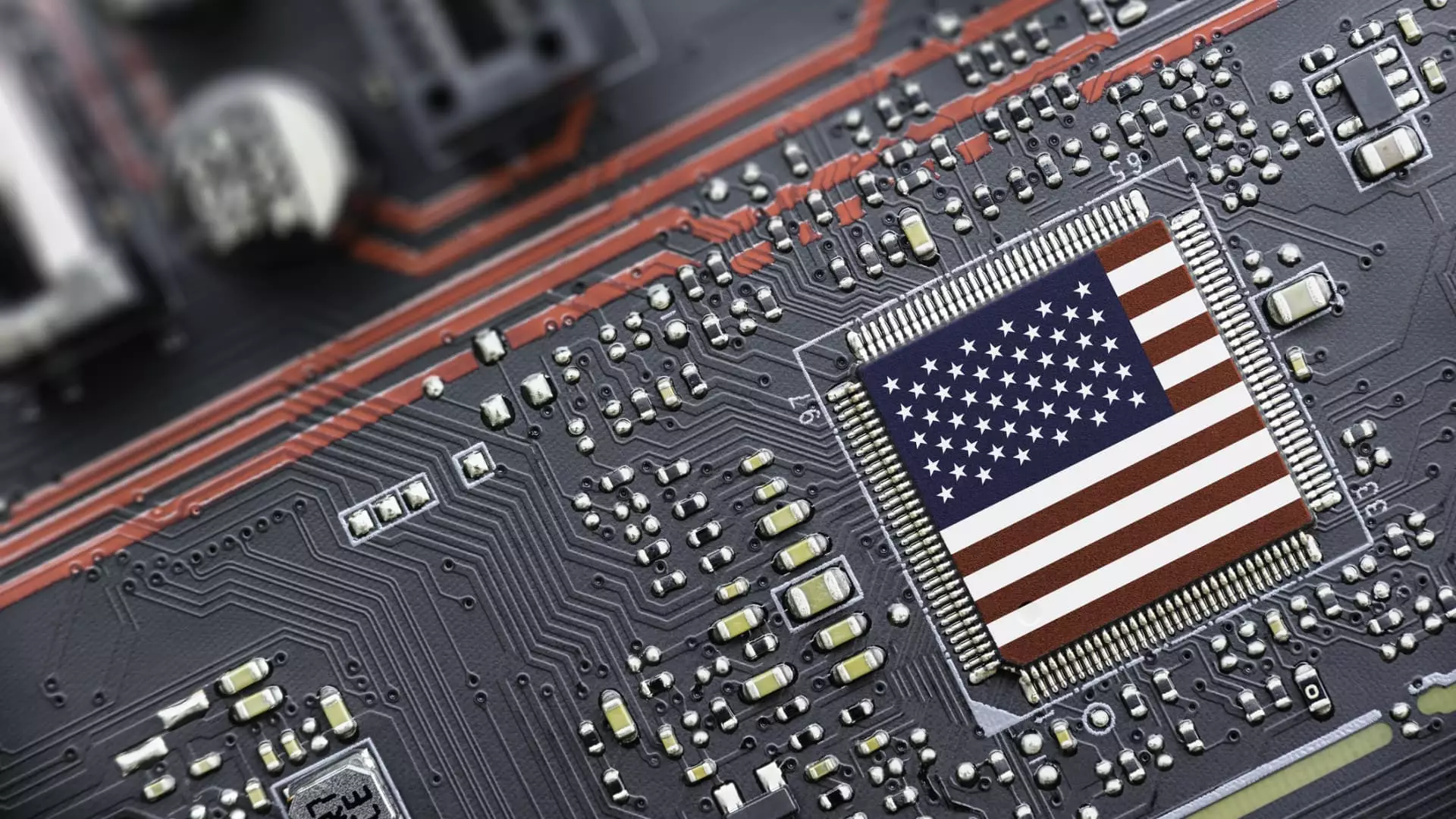The semiconductor market is in disarray, and the recent announcement from President Donald Trump may have initially seemed like relief for investors. Exempting semiconductors from extensive tariffs should have sent signals of optimism—however, the reality is far from encouraging. What is alarmingly evident is that this “good news” has not translated into trust or increased stock valuations. Major players like Nvidia and Micron saw their shares plummet by nearly 7% and 14%, respectively, and the downward spiral raises troubling questions about market confidence in the semiconductor sector’s resilience against political maneuvering.
The optimism was short-lived, revealing an all-too-common phenomenon: assumptions in the stock market are often built on fragile expectations. Investors understand that what initially appears to be good news can quickly morph into an illusion, as the reality of tariffs still looms over the sector. Economic forecasts indicate that tariffs around 10% remain in the pipeline, leading many to dread further market instability. This situation urges us to reconsider the efficacy of temporary relief in a politically charged landscape.
The Tariff Treadmill: No End in Sight
As tariffs circulate like a dark cloud over the semiconductor industry, it is evident that merely delaying the decision on semiconductor-specific tariffs won’t suffice. Investors are grappling with the harsh truth that these levies are not just a theoretical threat—they are a ticking time bomb destined to shake the market underfoot. Take Taiwan Semiconductor Manufacturing (TSMC), for instance; while it may attempt to mitigate losses by rerouting shipments, these efforts do little to shield it from the anticipated fallout.
Instead of being safeguarded by their geographical prowess, firms like TSMC face a labyrinth of consequences from tariffs placed on goods ranging from computers to smartphones. If consumers are squeezed financially due to steep import tariffs of nearly 40%, the massive demand for electronic devices simply evaporates. The chips that once soared in the market are now buried under a weight of doubt, exacerbating fears of a demand collapse.
The Imminent Demand Dilemma
Adding another layer of complexity are the orders Chinese tech companies are placing for Nvidia’s H20 AI chips in light of anticipated export restrictions. While it may seem prudent for Nvidia to ramp up production, this creates a precarious balancing act between satisfying immediate demand and evolving into a production beast with the risk of excess inventory. In the world of semiconductors, where innovation meets politics, such uncertainties can wreak havoc on a company’s bottom line.
With the intricacies of international trade and domestic policies constantly at odds, the foundation for robust demand in semiconductors grows more brittle. Reports have indicated that giant players like Microsoft are reconsidering their data center projects in a sweeping move that raises unsettling queries about future consumer engagement with AI services—once thought to be the growth engine of the industry. Will the tech giants retract or pause their investments, leading to a ripple effect that brings the entire supply chain to a grinding halt? The prospect is far from promising, and the ramifications could lead to serious economic repercussions.
The Fallacy of Protectionism
The fervor behind protectionist policies does little to bolster American chip manufacturers such as Intel and GlobalFoundries amidst a waning demand. While the narrative suggests that keeping manufacturing close to home could yield benefits, one cannot ignore that immediate effects will overshadow any long-term advantages. The trade-offs inherent in imposing tariffs risk alienating consumers who may find themselves priced out of the now-expensive technology they rely on daily.
This naive sentiment that tariffs will bolster domestic production requires a hard dose of reality. It might stir initial market activity, but it predominantly serves to suppress consumer spending, suffocating the growth that American manufacturers desperately need. The need for a more focused long-term strategy is evident—a balanced approach toward globalization, considering local investors’ stability while keeping economic growth on an upward trajectory.
The Need for Clear Communication and Strategic Planning
The glaring disconnect between recent developments regarding AI diffusion regulations and Trump’s intended policies is alarming. Without a clear directive, uncertainties will continue to haunt semiconductor stocks. This weakness emphasizes the urgency for clearer strategy from leadership, in an age where industries pivot with the tremors in global politics.
The road ahead requires vigilance and decisiveness—qualities that have often been obscured by political theatrics. If the administration is serious about fostering this vital industry, they need to provide structured guidelines that facilitate growth while navigating complex geopolitical landscapes. Without them, the semiconductor industry may find itself spiraling further into chaos, leaving investors wary and the market vulnerable. The sweet promise of innovation in chips risks being drowned in a sea of regulatory confusion, and that’s a chilling prospect in a tech-dependent world.


Leave a Reply